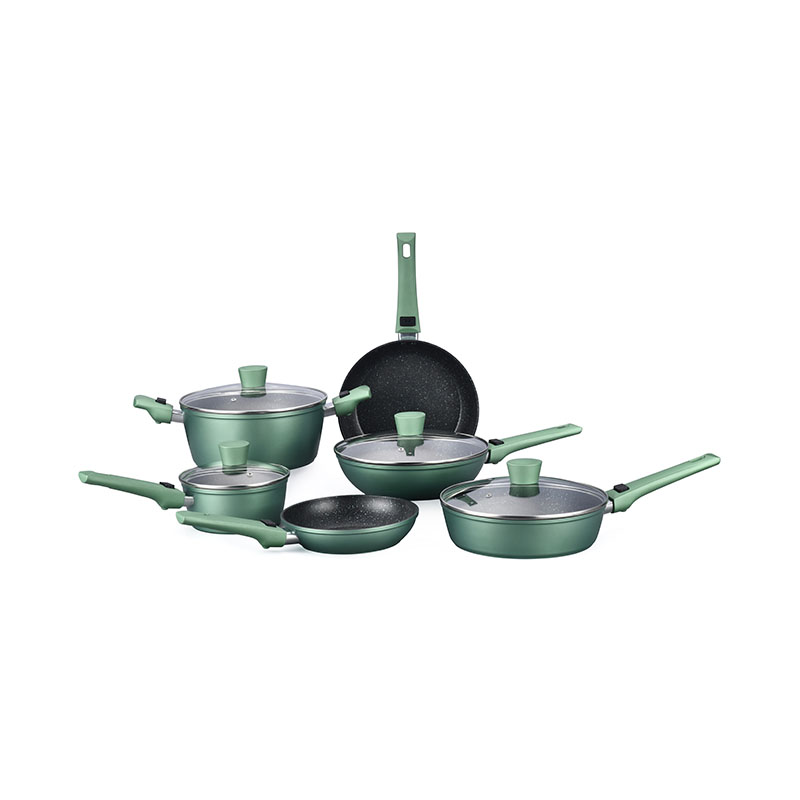
Have you ever gone to a South American market to check out their kitchenware? You might find something curious: the lightweight pots and pans are the ones that customers are choosing and purchasing the most. This isn't just a coincidence. There are very good reasons for such a preference. Given that you are a major participant in the Kitchen Cookware industry, let's find out the reasons for the popularity of lightweight Kitchen Cookware in South American countries such as Brazil, Argentina, and Colombia.
1. Lifestyle and Daily Cooking Habits
In South American cultures, cooking is often a vibrant and social experience. Picture it: family reunions, weekend asado (barbecue), and meals whipped up on the spot and served in record time. While heavy, cast-iron pots can do the slow cooking, most of the time they simply don't work for the day-to-day.
To accommodate the South American culture of cooking more than 3 meals a day for their family, children, and encourage a culture of using several pots for different dishes in order to make for more efficient and easier, and less energy exhausting cooking. Lightweight Kitchen Cookware can help to attain each of these objectives seamlessly.
In short, the daily rhythm of life demands Kitchen Cookware that keeps up without weighing people down.
2. Economic and Practical Factors
South American economies can be volatile, with inflation affecting purchasing power. This makes practicality a big deal when choosing Kitchen Cookware.
- Bottom-Line Value: Kitchen cookware made from Aluminum or thin stainless steel lightweight cookware is typically less expensive. It's a win for cost-conscious households to buy a good-quality pan without overspending.
- Replacement: Many assume that lightweight cookware means poor quality. However, modern materials have good reliability and durability. It is a good: cost-efficient and less hassle if the cookware does wear out. Brands that earn trust produce durable and light Kitchen Cookware.
- Less Time and Energy to Cook: Lighter pans heat up easily, which helps in saving energy. For places where energy costs are expensive, this is a small but valuable perk.
Here's a quick comparison to show why lightweight options often win in value:
| Feature |
Heavy Cookware |
Lightweight Cookware |
| Average Cost |
Higher |
Lower |
| Energy Efficiency |
Slower heating |
Faster heating |
| Ease of Handling |
Requires more effort |
Easy to lift and move |
| Replacement Cost | Expensive |
Affordable |
As you can see, for everyday use, lightweight Kitchen Cookware scores high on practicality.
3. Cultural Influences and Social Trends
Culture plays a huge role too.
- Outdoor and Social Cooking: In many countries, grilling outdoors is a big deal. Lightweight pans and pots are easier to carry to the backyard or park.
- Health Consciousness: With a growing focus on healthy eating, people are using less oil and cooking more fresh meals. Lightweight non-stick pans require minimal oil, making them a go-to for health-conscious cooks.
- Urban Living: In cities, space is tight. Compact, stackable Kitchen Cookware that's easy to store is a lifesaver in small apartments. Lightweight materials like ceramic-coated aluminum are popular for this reason.
It's clear that cultural habits make lightweight Kitchen Cookware a natural choice.
4. Material Innovation and Market Offerings
The Kitchen Cookware industry has evolved, offering lightweight options that don't sacrifice quality.
Aluminum and Alloys: This is the star player. Aluminum Kitchen Cookware is light, conducts heat well, and is often reinforced with non-stick coatings. It's cheap and effective, perfect for mass markets.
Eco-Friendly Options: Recently, recycled materials and ceramic coatings have gained traction. They're lighter and appeal to environmentally aware consumers, adding another layer to the Kitchen Cookware preferences.
Thanks to these advances, shoppers don't have to choose between performance and convenience. Lightweight Kitchen Cookware now offers the best of both worlds.
South American consumers' preference for lightweight kitchenware is ultimately the result of a combination of lifestyle, economic conditions, culture, and clever product design. From making daily cooking less of a chore to fitting into social traditions, these pots and pans just make sense for the region.
For anyone in the Kitchen Cookware business, paying attention to these factors can lead to better products and happier customers. After all, great cookware should make life easier—and in South America, that means keeping it light!



 Español
Español عربى
عربى

